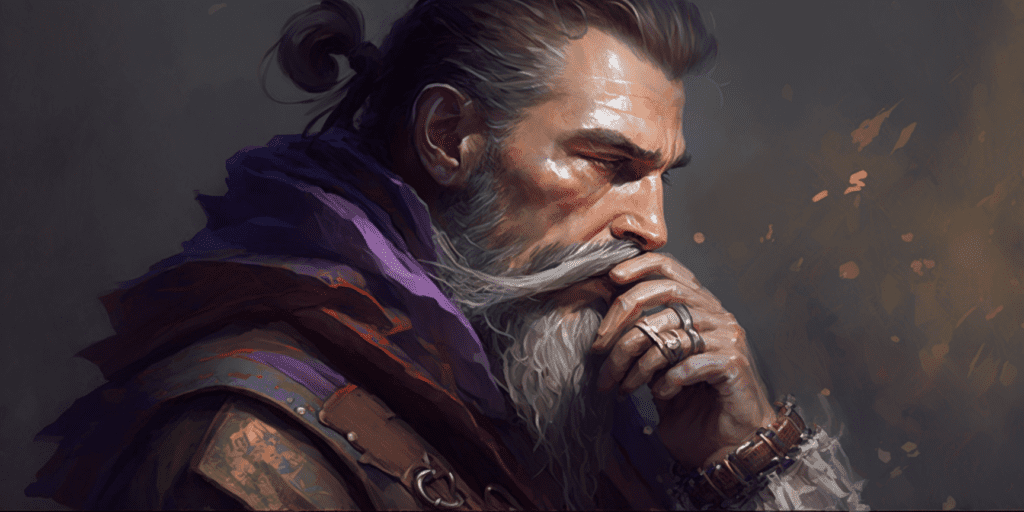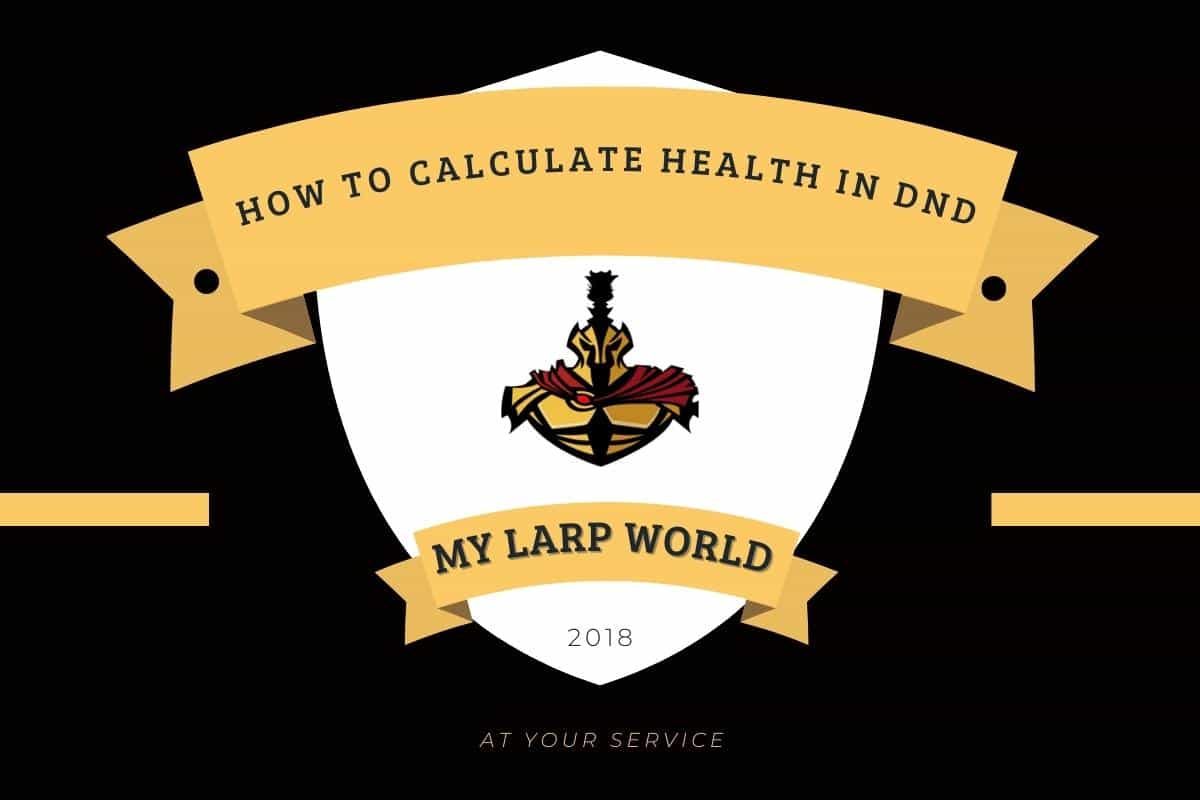DnD is filled with different mechanics, and it’s not easy to keep up with every single one of them in the beginning. For example, figuring out how much health your character has is one of the most basic things in the entire game, but it still requires knowledge.
So, how do you calculate your character’s health in DnD?
In DnD, you calculate hit points from the first level. At level 1, you take your hit points plus your constitution modifier. Your hit points are based on what class you are, as they use different hit dice. Every level after level 1, you either roll your hit die and then add your constitution modifier, or take the average roll of your hit die plus your constitution modifier.
Now that you know the basics for calculating your HP in DnD, you might think that it’s not as straightforward as in other games. If you feel this way, keep reading to find out the nitty-gritty of calculating HP, and more details surrounding health in DnD.
It can certainly be confusing in the beginning, but it’s quite easy once you figure it out.
How To Calculate Your Character Health In DnD

Health is usually called hitpoints (HP) in DnD. Your maximum hitpoints are the most amount of damage points you can take before you hit 0.
When you hit 0, your character dies. Sometimes DMs like to give some leeway to their PCs when dying, based on what led to the death, for example, if the PC was incredibly unlucky or something to that effect.
I mentioned earlier that calculating your increase in health per level and your starting health on level 1 depends on your constitution modifier. So, what is a constitution modifier?
It’s a bonus modifier that contributes to your maximum health, based on your constitution, which is a base stat. For example, if you have 12 in constitution, you receive a +1 to your constitution modifier, and the more constitution, the more the modifier increases.
Something to note here is that if your constitution modifier increases as a result of you leveling up and getting more constitution, your new constitution modifier applies to previous levels as well.
This means that if you had +1 in constitution modifier up to level 4, but at that level, you got +2, you apply the +2 modifier to levels 1, 2, and 3 as well.
Below, you can find a simple DnD health calculator that you should be able to use for your own character.
DnD Health Calculator
Let’s talk a bit about how the different dice work with the different classes. As I touched on before, when you level up, you either roll your hit die or take the average of it + your constitution modifier. Usually, tankier classes get “better” dice.
For example, the Fighter gets 1d10 per level while Warlocks get 1d8. There is a choice to be made here, do you roll your dice or do you take the average of it? This is a somewhat complicated topic and I won’t be going in too deep into it here.
Let’s just say that some players like to roll for fun and roleplay purposes, while other players like to take the average because of the more even results it gets you. If you want more details on this topic, you can find it in the Player’s Handbook.
You might also like: The Complete Guide On How To Start Playing D&D
How Much Health Should A Level 20 Character Have?
There isn’t a required amount of HP, and there isn’t a specific recommended amount either. How much health your character has depends in large on what class you’re playing!
At level 20, the most health a character could possibly have is around 550, if you roll for stats and have some perks that give you health. Realistically, however, there are not a lot of characters with that much HP.
The class with the highest amount of health is the Barbarian, and the race with the highest health is the Hill Dwarf.
What Do You Roll A D20 For?
So what do you actually use the d20, the dice which the DnD system is named after, for? Let’s get into it.
The d20 is used for a lot of things in DnD, namely attacks, skill and ability checks, and initiative among other things. Before you roll, you set a number that you must beat for a given action, then you try to roll that number or higher.
Every number on a d20 has a 5% likelihood of hitting, and I would say that the d20 probably is the most used dice in all of DnD.
You might also like: How Many Dice Should You Have In DnD?
How Do You Roll For Stats In DnD?
A character’s stats are arguably the most fundamental part of DnD. It shapes a character’s skill set, personality, and how they play the game. The basic stats of a character in DnD are Strength, Constitution, Intelligence, Dexterity, Charisma, and Wisdom.
These stats all contribute to a character in different ways, and the most common way to determine how much in each stat you have is to roll for it with a die.
So, how do you go about this? Well, first you roll four d6 dice, and then you remove the lowest number out of those four. Then you add the remaining three dice numbers to get a total score which you then assign to one of the stats mentioned above.
Do this for every stat, and remember to write it down on your character sheet. You’re done!
How Do You Calculate Attack Damage In DnD?

Attacks are basically divided into two sections in DnD. First, you roll for your attack to hit. This is compared to the enemy’s armor class (AC). If your enemy has 10 in AC, then 10 is the number for you to beat with a d20.
If you roll a natural 20 on this roll, your attack will automatically critically strike the enemy. Critical strikes let you use double the amount of dice for your damage roll. You can also get bonuses to your d20 roll, depending on what type of character you’re playing.
When rolling for an attack, oftentimes you don’t just roll a d20, but you take into consideration proficiency bonuses and other attack bonuses based on the weapon and your abilities (some weapons use dexterity modifiers, some use strength, etc)
Now, after a successful attack roll, you roll for damage. What dice you are supposed to use when rolling for this depends on what ability you use, what weapon you use to attack, and more.
How To Calculate Armor Class In DnD
Armor class means how likely a person is to get hit. This can be due to superior evasion, or a big, buff armor set. So, how do you calculate it?
First of all, a higher armor class equals harder to hit. If the person is unarmored, you take 10 as a baseline and then add the dexterity modifier of that character, and there you have it. Things are a bit different if a character is wearing armor, however.
The short answer is that it depends a lot on what armor you’re wearing. That’s why we have the PHB. If you’re wearing chainmail, your armor class simply gets set to 16. If you’re wearing a breastplate, you start with 14 and add your dexterity modifier (Max +2).
The bottom line is that calculating AC isn’t very complicated, just get the PHB and look at the right tables, and you’re good to go!
You might also like: What’s the Highest Armor Class In DnD?

